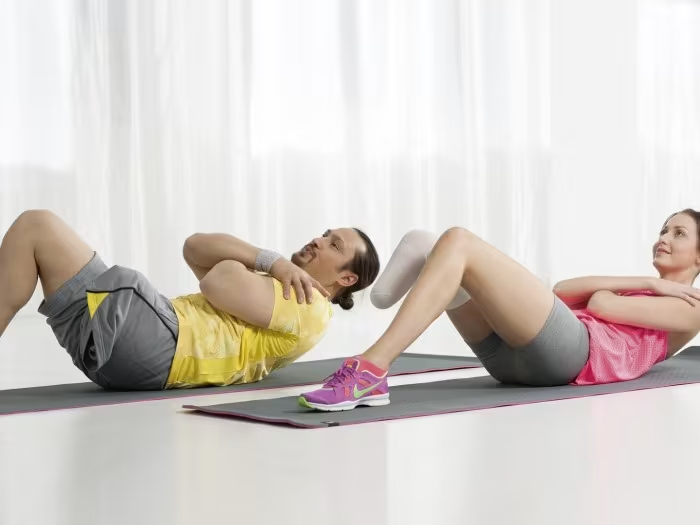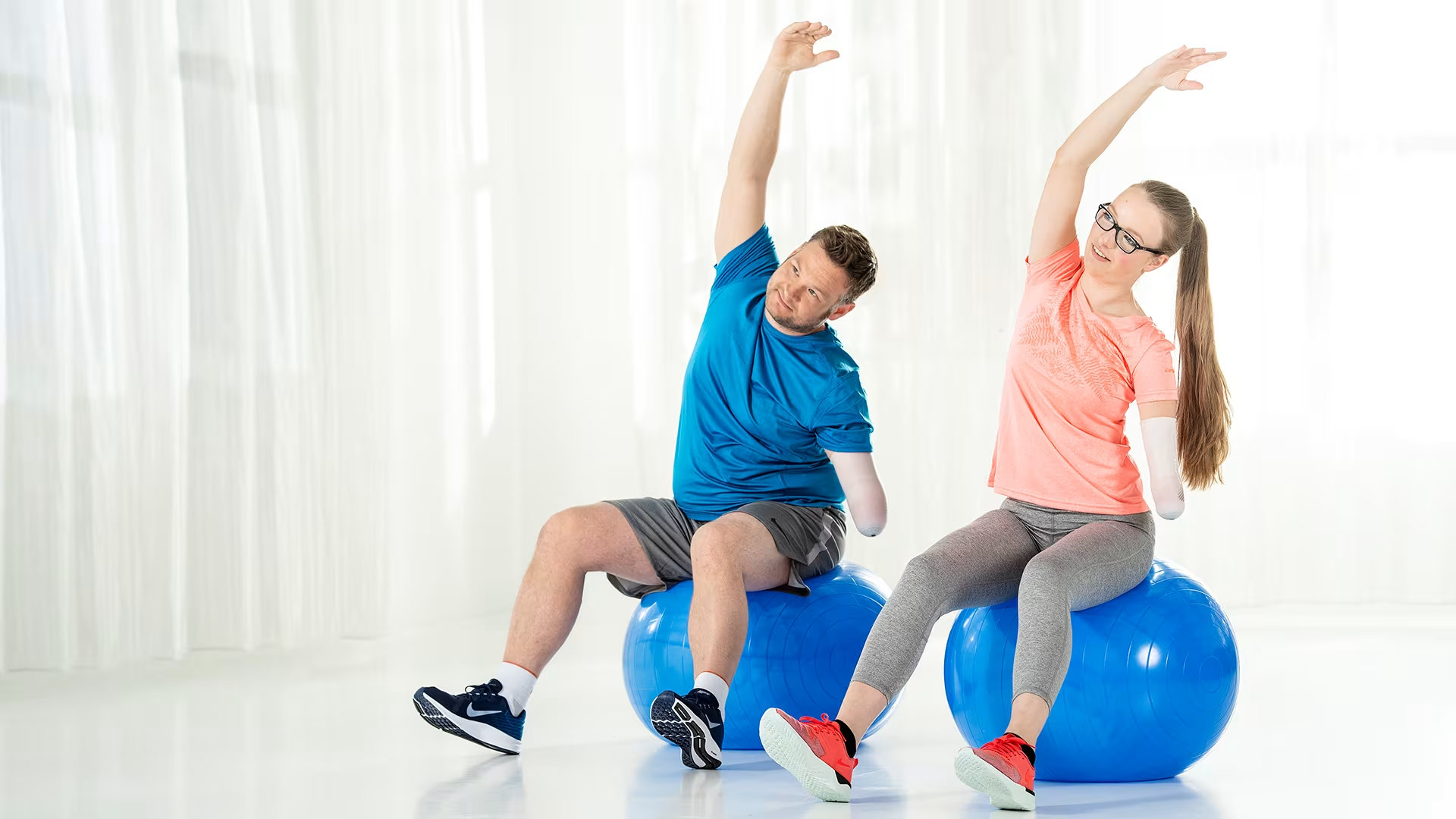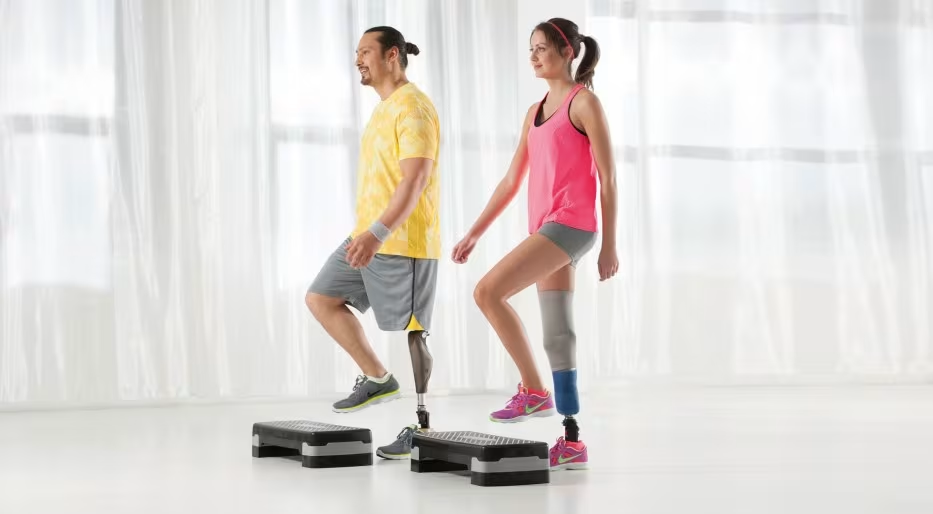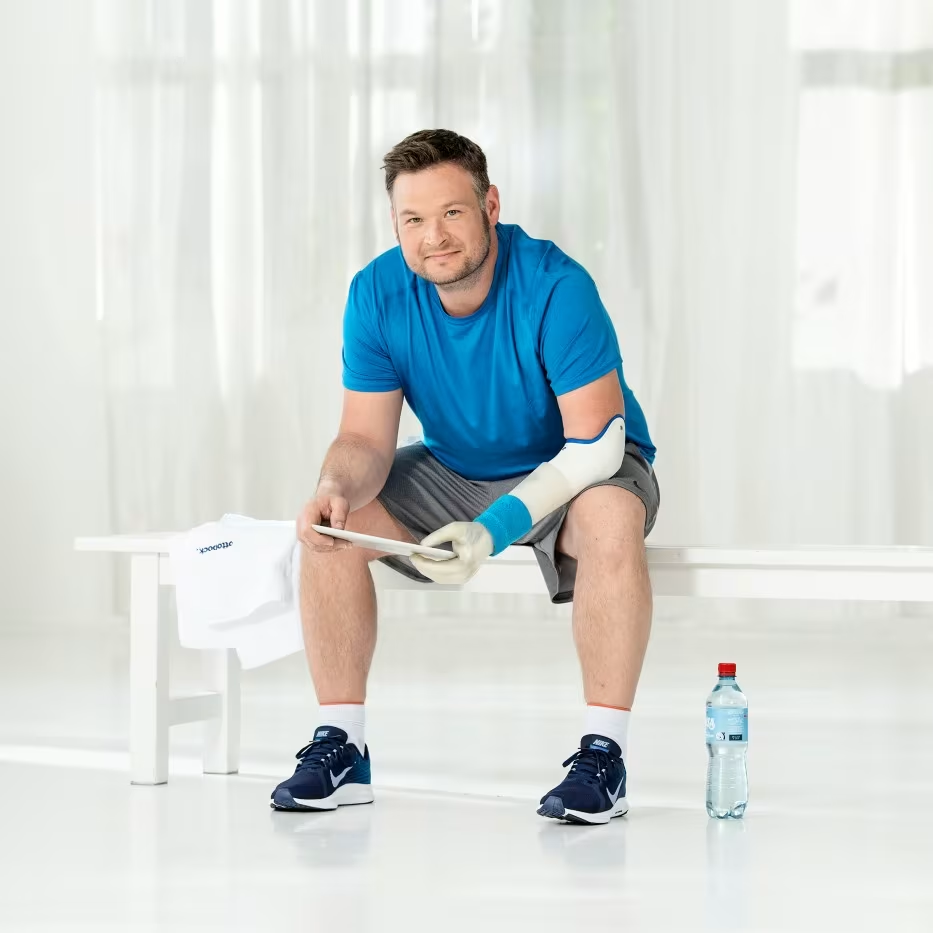Fitness for amputees in Movao

"Movao": Fitness for Amputees app
The Fitness for Amputees app was developed by Ottobock physiotherapists specifically for arm and leg amputees. It contains 5 modules for a holistic training program: "Stretching & Relaxation", "Strength & Endurance", "Coordination & Balance", "Torso" and "Shoulder".
In order to get the best possible benefit from your prosthesis, the Ottobock therapists recommend training 2 to 3 times a week for 5 to 11 minutes and regularly switching between modules.
Download the Movao app
From April 2024, the fitness for amputees app can be found in our sports community in Movao. Download the Movao app for free from the app stores or use the browser version here and start your daily fitness and rehabilitation program.
In the community you can also exchange ideas with other members and motivate each other.





